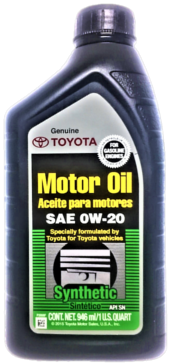I have this UOA. Can you see bearing wear anywhere on this report? On the 2019 Miata what are main and connecting rod bearings made of?
You are using an out of date browser. It may not display this or other websites correctly.
You should upgrade or use an alternative browser.
You should upgrade or use an alternative browser.
Can you see any bearing wear?
- Thread starter Bill_W
- Start date
No.
Look at Lead, Copper, Aluminum.
Bearings are compromised of some of these materials in alloy form.
Look at Lead, Copper, Aluminum.
Bearings are compromised of some of these materials in alloy form.
MolaKule
Staff member
The problem in determining the source of metallic elements is that one has to know the metallurgy of each of the machine components.
It is further complicated by the fact that many components in the engine can contribute to the same metal atoms seen in a UOA.
A UOA only gives one an indication of the condition of the used oil as compared to the condition of the new oil (VOA).
It is further complicated by the fact that many components in the engine can contribute to the same metal atoms seen in a UOA.
A UOA only gives one an indication of the condition of the used oil as compared to the condition of the new oil (VOA).
Last edited:
This is outdated (2018) but can this help?The problem in determining the source of metallic elements is that one has to know the metallurgy of each of the machine components.
It is further complicated by the fact that many components in the engine can contribute to the same metal atoms.
A UOA only gives one an indication of the condition of the used oil as compared to the condition of the new oil (VOA).

PETROLEUM QUALITY INSTITUTE OF AMERICA TEST PROGRAM
The Petroleum Quality Institute of America (PQIA) is an independent resource for information and insights on the quality of lubricants in the marketplace. Our mission is to serve the consumer of lubricants by randomly sampling and independently testing lubricants taken from the field. Test...
 pqiadata.org
pqiadata.org
MolaKule
Staff member
Help with what?This is outdated (2018) but can this help?
It is kinda like a VOA but not from the same lab. Maybe not much help.Help with what?
MolaKule
Staff member
Well, sort of, but this VOA analysis is 4 years old and formulations are changing at a rapid pace.It is kinda like a VOA but not from the same lab. Maybe not much help.
My suggestion has always been to do a VOA of the oil you intend to use and then later do a UOA at the next set of oil changes to observe if there is any "trending."
Changing oil brands in mid-OCI only confuses the issue.
No.
Look at Lead, Copper, Aluminum.
Bearings are compromised of some of these materials in alloy form.
It is my understanding that Mazda no longer uses lead anywhere in their vehicles including the engine.
OVERKILL
$100 Site Donor 2021
The change to bi-metal (aluminum/silicon) bearings started more than 20 years ago, most OEM's have made the switch.No.
Look at Lead, Copper, Aluminum.
Bearings are compromised of some of these materials in alloy form.
Thanks Mola.The problem in determining the source of metallic elements is that one has to know the metallurgy of each of the machine components.
It is further complicated by the fact that many components in the engine can contribute to the same metal atoms seen in a UOA.
A UOA only gives one an indication of the condition of the used oil as compared to the condition of the new oil (VOA).
They may not use a lead alloy but perhaps copper aluminum.It is my understanding that Mazda no longer uses lead anywhere in their vehicles including the engine.
Ya I forgot to add silicon and nickel. So Al, Cu, SI, Ni is some alloy form.The change to bi-metal (aluminum/silicon) bearings started more than 20 years ago, most OEM's have made the switch.
Similar threads
- Replies
- 16
- Views
- 984
- Replies
- 9
- Views
- 2K
- Replies
- 10
- Views
- 1K
- Replies
- 12
- Views
- 701
